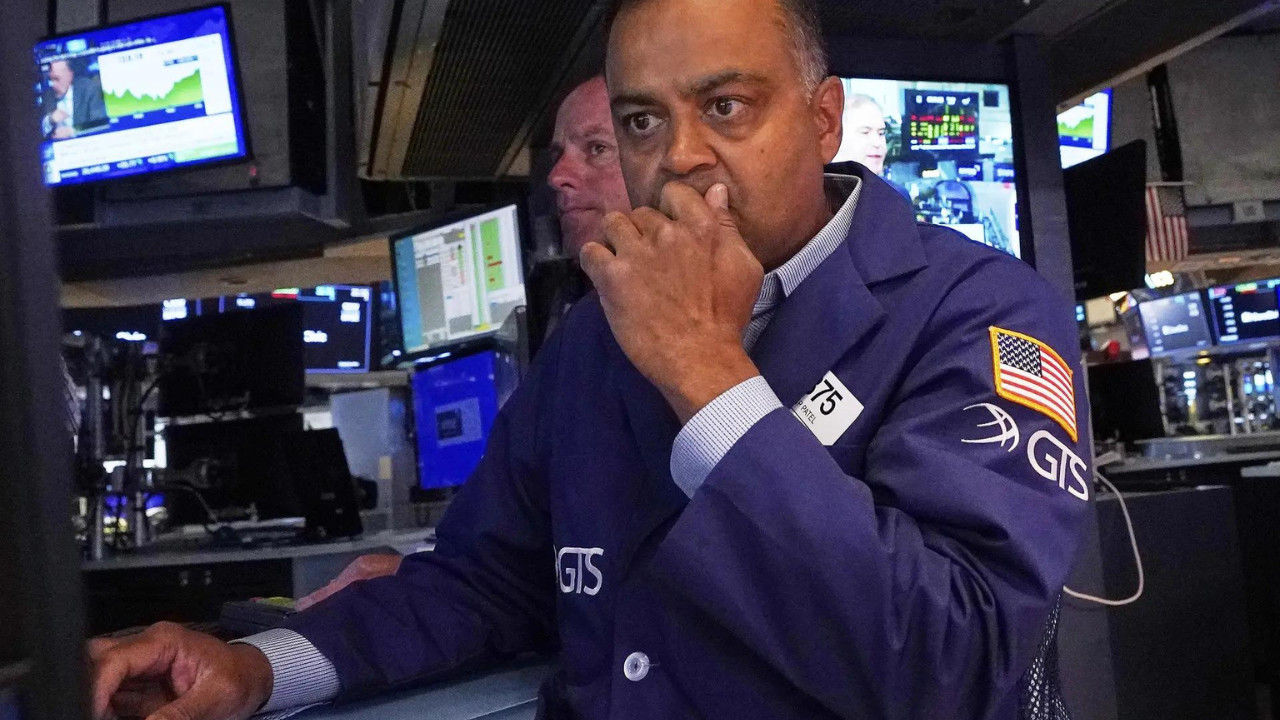US markets showed mixed trends. Investors analyzed second-quarter earnings reports. They anticipated potential trade agreements from President Donald Trump before the August 1 tariff deadline. Nasdaq Composite rose, driven by Alphabet’s strong AI demand. Dow Jones Industrial Average declined due to Tesla’s earnings concerns. European Central Bank maintained interest rates, awaiting eurozone-US trade talk outcomes.
Wall Street’s Wild Ride: A Tug-of-War Between Tech and Trade
Wall Street experienced a day of mixed fortunes, a veritable seesaw of gains and losses, leaving investors both intrigued and perhaps a little bewildered. The Dow Jones Industrial Average took a dip, while the tech-heavy Nasdaq managed to claw its way higher. What forces were at play in this market dance? Let’s unpack it.
The Dow’s decline was partly attributed to a significant drag from Tesla. Elon Musk’s electric vehicle giant faced headwinds, impacting the overall performance of the index. But one company’s struggle doesn’t define the entire market, and thankfully, other sectors offered some counterbalance.

Alphabet Powers the Nasdaq Ascent
On the flip side, Alphabet, Google’s parent company, provided a substantial boost to the Nasdaq. Strong performance and positive sentiment surrounding Alphabet helped lift the tech-centric index, illustrating the continuing power and influence of big tech in today’s market. It’s a reminder that innovation and technological advancement remain key drivers of growth.
Trade Deal Hopes: A Ray of Optimism
Adding another layer to the market’s complexity were renewed hopes for progress on trade deals. Talk of potential breakthroughs in trade negotiations provided a general sense of optimism, supporting market sentiment across various sectors. The global economy is intertwined, and positive developments on the trade front often translate to positive reactions on Wall Street.
These hopes weren’t enough to rescue the Dow entirely, but they certainly acted as a buffer, preventing a more substantial downturn. This underlines a critical point: the market is constantly reacting to a multitude of factors, both domestic and international.
What’s Driving the Market? A Deeper Dive
Beyond individual company performances and trade whispers, several underlying currents are shaping the market landscape. Inflation remains a key concern, with investors carefully monitoring economic data for clues about the Federal Reserve’s next moves. Interest rate hikes, designed to combat inflation, can have a cooling effect on the market, but the Fed must strike a delicate balance to avoid triggering a recession.
Consumer spending, another crucial indicator, is also being closely watched. Strong consumer demand typically fuels economic growth, but signs of weakening spending could raise concerns about a potential slowdown. The interplay between inflation, interest rates, and consumer behavior creates a complex equation that investors are constantly trying to solve.
Navigating the Uncertainties: Investment Strategies for Today
In such a dynamic environment, how should investors approach the market? Diversification remains a cornerstone of sound investment strategy. Spreading your investments across different sectors and asset classes can help mitigate risk and potentially capture opportunities in various parts of the market.
Consider your risk tolerance and long-term financial goals. Are you a conservative investor seeking stability, or are you willing to take on more risk in pursuit of higher returns? Your individual circumstances should guide your investment decisions.
It is also smart to stay informed and informed by keeping up to date with news and expert analysis so you can better understand the market and make sound investment choices. For instance, reading our own analysis on understanding market volatility, another great article on investing.
The Road Ahead: Is It All About the Tech?
Looking ahead, the market’s direction will likely depend on a combination of factors, including corporate earnings, economic data releases, and geopolitical developments. While tech stocks have been a driving force in recent years, other sectors may also offer compelling opportunities. Energy, healthcare, and financials, for example, could benefit from specific trends and policy changes.
Ultimately, the market is a reflection of the collective wisdom (and sometimes the collective anxieties) of millions of investors. It’s a dynamic, ever-changing landscape that requires careful observation, informed decision-making, and a healthy dose of patience. The interplay between company performance, global trade dynamics, and overarching economic trends will continue to shape the fortunes of Wall Street. Investors should be prepared for continued volatility and remain focused on their long-term financial goals.







